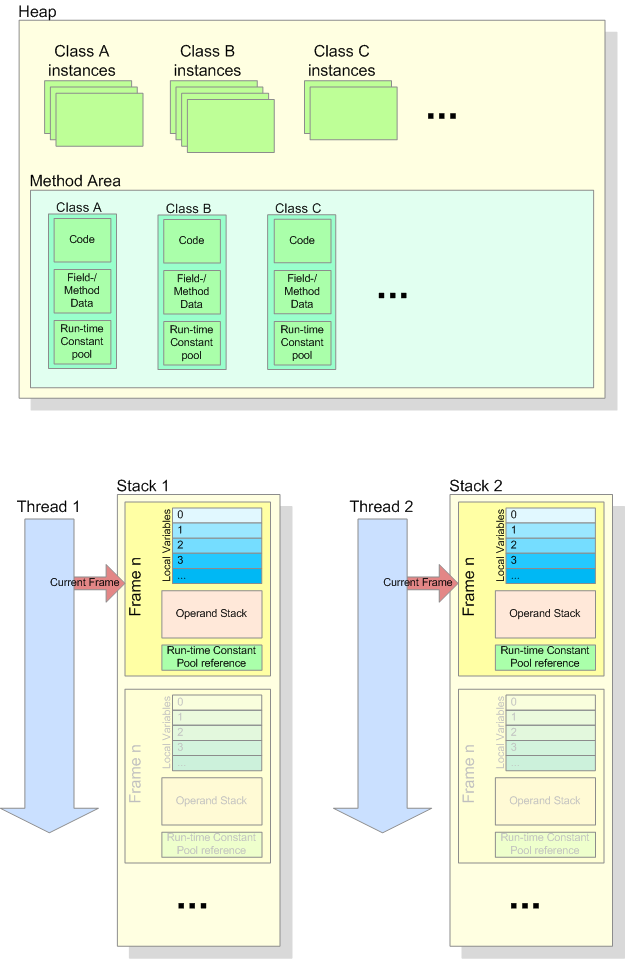The following diagram summarizes the internal structure of a Java Virtual Machine’s memory structure as specified in chapter “2.5. Run-Time Data Areas” in The Java® Virtual Machine Specification, Java SE 8 Edition. In this example, three classes A, B, and C have been loaded into the JVM, and for each of those classes, a varying number of instances have been created. Two threads have also been created.
The Frames on each Thread’s stack are associated with a particular method. Each time a method is invoked, a new Frame is created on the Stack. When the method returns, the frame is discarded from the stack. The Frame which is associated to the current method is the Current Frame. Each Frame has an Operand Stack which is used by the bytecode instructions to perform operations. Local variables are referenced by their index, starting at 0. The Runtime Constant Pool reference in each Frame is a reference to the Runtime Constant Pool of the class which contains the method which is currently executing.
